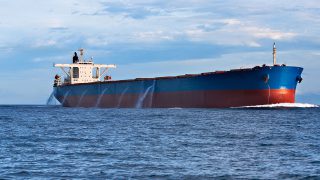USCG Issues BWM Extension Program Guide

The United States Coast Guard (USCG) has released a new guidance related to its Ballast Water Management (BWM) Extension Program, which grants an extension of a vessel’s compliance date to an owner/operator who proves that BWM compliance is not possible.
Vessel owners/operators are obliged to comply with the ballast water regulations which require the use of one of the approved BWM methods. One of such methods is installation and operation of a US type-approved ballast water management system (BWMS).
If a type-approved system is not available for a vessel, and compliance with the other approved BWM methods is not possible, the vessel owner/operator may apply for an extension of the vessel’s compliance date. Whether a type-approved system is available will be based on evidence submitted by the vessel owner/operator with the application for extension.
The length of compliance date extensions, when granted, will be based on the availability of Coast Guard type-approved systems and detailed installation plans. Vessel owners and operators should anticipate that this will not typically align with scheduled dry docking, the USCG said.
For vessels having a compliance date before and including December 31, 2018, the following requests will be evaluated:
Extension requests that do not justify why compliance with one of the BWM methods is not possible by the current compliance date will be denied.
Vessel owners/operators who have identified that a Coast Guard type-approved BWMS is available for a vessel but do not have enough time to install it prior to the vessel’s compliance date must provide a strategy, including a detailed installation plan, for how the vessel would be brought into compliance by installing a BWMS before the end of the extension. Extensions granted on this basis should be expected not to exceed 18 months.
Vessel owners and operators who have identified that a Coast Guard type-approved BWMS is not available for a vessel must provide a strategy, including a timeline, for how the vessel would be brought into compliance before the end of the extension. Extensions granted on this basis should be expected not to exceed 30 months, according to the USCG.
With regard to ships having a compliance date between January 1, 2019 and December 31, 2020, the USCG said it will begin considering these requests 18 months before the vessel’s compliance date. These requests could be impacted by changes in the market or availability of type-approved systems. Owners/operators can submit additional information in support of their extension request.
For vessels having a compliance date of January 1, 2021 or later, the USCG does not anticipate granting extensions. Vessel owners/operators should plan to be in compliance on their current compliance date.
Furthermore, ships having an alternative management system (AMS) installed do not qualify for an extension because the vessel complies with the regulations. The AMS can be used for a period of five years after the vessel’s compliance date. Once US type-approved BWMS are available for a vessel, the vessel will no longer be able to install AMS in lieu of type-approved systems. Therefore, if a vessel is not past its compliance date and installing an AMS is being considered as a compliance method, the vessel owner/operator should evaluate whether a BWMS is available for the vessel. If such as system is not available, an AMS can be installed before the vessel’s compliance date and used for up to five years after the vessel’s compliance date.
Existing compliance date extensions are valid until the date specified in the letter and may be transferred to a new owner/operator for the remainder of its term. Upon the letter’s expiration, a vessel must implement one of the approved BWM methods.
Vessel owners/operators should submit a request for an extension 12- 16 months before the vessel’s compliance date. Requests submitted less than 12 months prior to the compliance date are likely to be denied.
The USCG requires this time to review the application, request additional information from the applicant, and make a determination whether to grant or deny the request. If the extension request is denied, this allows the vessel owner or operator enough time to prepare for and install a BWMS, or assess compliance options using another approved BWM method prior to the vessel’s compliance date.
If the USCG grants an extension for a vessel, the vessel owner/operator should plan operations to ensure the ship will be in compliance at the vessel’s extended compliance date. Supplemental extensions should not be anticipated, according to the USCG.
The International Maritime Organization’s (IMO) BWM Convention is scheduled to enter into forceon September 8, 2017.
Under the convention’s terms, ships will be required to manage their ballast water to remove, render harmless, or avoid the uptake or discharge of aquatic organisms and pathogens within ballast water and sediments.
HEADLINES
- Do shipping markets want Biden or Trump for the win?
- All 18 crew safe after fire on Japanese-owned tanker off Singapore
- Singapore launching $44m co-investment initiative for maritime tech start-ups
- Cosco debuts Global Shipping Industry Chain Cooperation Initiative
- US warns of more shipping sanctions
- China continues seaport consolidation as Dalian offer goes unconditional